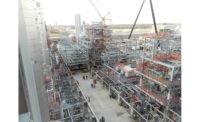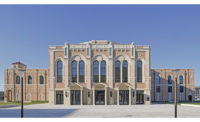Project Cayenne
Dallas/Fort Worth
BEST PROJECT
Submitted by: Brandt Cos.
Owner: Confidential Airline
Lead Design Firm: Netta Architects
General Contractor: Holt Construction Group
MEP Engineers: Brandt Cos.; Purdy-McGuire
Subcontractors: ABLe Communications, Schneider Electric; Precision Flow Engineering; Johnson-Lancaster; Knapp; Mechanical Insulation Contractors; Osburn Contractors LLC; Convergint; Lasco Acoustics & Drywall Inc.; Siemens Industry Inc.
Project Cayenne is a new two-story catering facility near Dallas-Fort Worth International Airport (DFW). The approximately 214,000-sq-ft building provided the airline owner with an expanded facility to support existing food and beverage operations.
The facility is designed to help the airline cater flights more efficiently and enhance operational performance at DFW.
“The kitchen operates around the clock, housing various functions such as a food preparation kitchen, food and beverage processing and assembly areas, dishwashing section, inbound and outbound docks, and warehouse and freezer storage spaces. This facility is now the largest airline catering kitchen in the U.S.,” said the Brandt Cos..
The design and construction teams faced numerous challenges while completing the project. In order to keep on schedule, teams worked closely. Holt Construction and Brandt gained partial access to completed areas in stages. By using prefabricated systems, onsite installation was expedited, reducing schedule impact, Brandt noted.

Photo courtesy Brandt Construction Co.
“Due to the project’s proximity to the airport and the presence of flight paths, lifting equipment had to comply with strict regulations. Brandt directly coordinated with the Federal Aviation Administration to utilize a helicopter for lifts within its weight capacity,” the company said.
Another challenge was the grease waste system. The company explained that a grease waste system required handling temperatures beyond the range of PVC piping. Instead of resorting to expensive stainless steel or cast-iron systems, Brandt proposed a cost-effective hybrid solution.
“This approach utilized push-fit stainless steel where higher temperatures were expected and PVC where temperatures fell within its range. The engineer and owner accepted this solution, saving considerable time and costs,” Brandt said. This is just one example of foresight in material selection for critical components the team made. Another was the selection of double-walled stainless-steel ducts to safeguard the exhaust ducts of industrial dishwashers and cart washers against corrosion.





Post a comment to this article
Report Abusive Comment